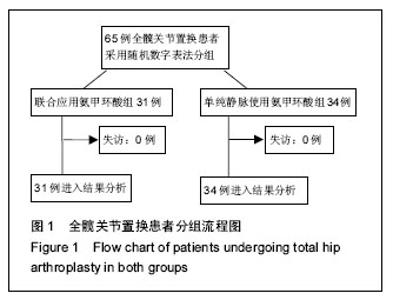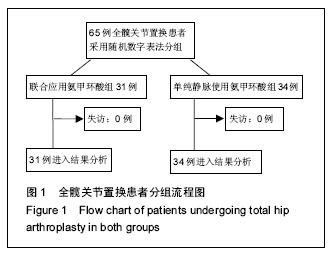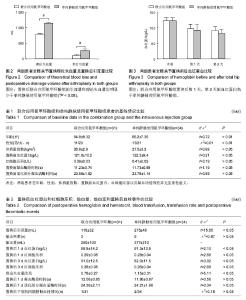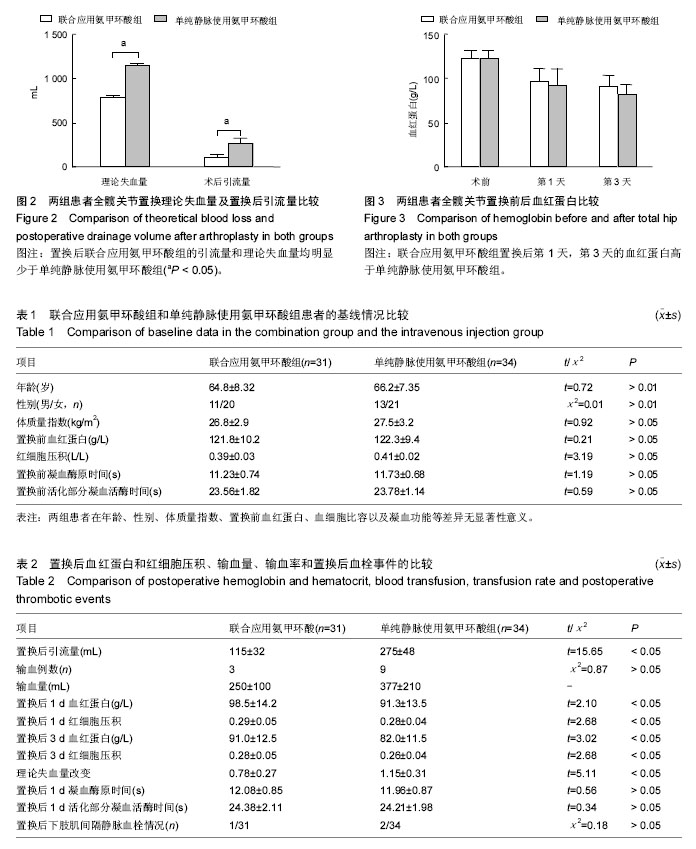| [1] Nadler SB, Hidalgo JU, Bloch T. Prediction of blood volume in normal human adults. Surgery.1962;51(2): 224-232.[2] Gross JB.Estimating allowable blood loss:corrected for dilution. Anesthesiology.1983;58(3):277-280.[3] Dunn CJ, Goa KL.Tranexamic acid: a review of its use in surgery and other indications. Drugs.1999; 57(6): 1005-1032.[4] McCormack PL. Tranexamic acid a review of its use in the treatment of hyperfibrinolysis. Drugs.2012; 72: 585-617.[5] Yamasaki S, Masuhara K, Fuji T et al. Tranexamic acid reduces blood loss after cementless total hip arthroplasty-prospective randomized study in 40 cases. Int Orthop.2004;28:69-73.[6] Rajesparan K, Biant LC, Ahmad M, et al. The effect of an intravenous bolus of tranexamic acid on blood loss in total hip replacement. J Bone Joint Surg Br.2009; 91(6):776-783.[7] Nilsson IM. Clinical pharmacology of aminocaproic and tranexamic acids. J Clin Pathol Suppl(R Coll Pathol). 1980;14:41-47.[8] McConnell JS,Shewale S,Munro NA,et al.Reduction of blood loss in primary hip arthroplasty with tranexamic acid or fibrin spray A randomized controlled trial.Acta Orthopaedica.2011;82:660-663.[9] Wei W, Wei B. Comparison of topical and intravenous tranexamic acid on blood loss and transfusion rates in total hip arthroplasty. J Arthroplasty. 2014;29(11): 2113-2116. [10] Xu X, Xiong S, Wang Z, Topical administration of tranexamic acid in total hip arthroplasty: A meta-analysis of Randomized Controlled Trials. Drug Discov Ther. 2015;9(3):173-177.[11] North WT, Mehran N, Davis JJ etal. Topical vs Intravenous Tranexamic Acid in Primary Total Hip Arthroplasty: A Double-Blind, Randomized Controlled Trial. J Arthroplasty. J Arthroplasty. 2016;31(5): 1022-1026.[12] Jain NP, Nisthane PP, Shah NA. Combined Administration of Systemic and Topical Tranexamic Acid for Total Knee Arthroplasty: Can It Be a Better Regimen and Yet Safe? A Randomized Controlled Trial. J Arthroplasty. 2016;31(2):542-547. [13] Lin SY, Chen CH, Fu YC, et al. The efficacy of combined use of intraarticular and intravenous tranexamic acid on reducing blood loss and transfusion rate in total knee arthroplasty. J Arthroplasty. 2015;30(5):776-780.[14] Phillips SJ,Chavan R,Porter ML,et al.Does salvage and tranexamic acid reduce the need for blood transfusion in revision hip surgery? J Bone Joint Surg Br.2006;88: 1141-1142[15] Gill JB,Rosenstein A.The use of antifibrinolytic agents in total hip arthroplasty: a meta-analysis, J Arthroplasty. 2006;21:869-873.[16] Brown JR,Birkmeyer NJ, Connor GT.Meta-analysis coin-paring the effectiveness and adverse outcomes of anti-fibrinolytic agents in cardiac surgery. Circulation. 2007;15(22):2801-2813.[17] Irisson E, Hemon Y, Pauly V, et al.Tranexamic acid reduces blood loss and financial cost in primary total hip and knee replacement surgery.Orthop Traumatol Surg Res.2012;98:477-483.[18] Sukeik M,Alshryda S,Haddad FS,et al.Systematic review and meta-analysis of the use of tranexamic acid in total hip replacement.J Bone Joint Surg Br.2011;1: 39-46.[19] Lin ZX, Woolf SK. Safety, Efficacy, and Cost-effectiveness of Tranexamic Acid in Orthopedic Surgery. Orthopedics. 2016;39(2):119-130. [20] Kim C, Park SS, Davey JR.et al. Tranexamic acid for the prevention and management of orthopedic surgical hemorrhage: current evidence. J Blood Med. 2015;6: 239-244.[21] Chen JY, Lo NN, Tay DK et al. Intra-articular administration of tranexamic acid in total hip arthroplasty. J Orthop Surg (Hong Kong). 2015;23(2): 213-217.[22] Phan DL, Rinehart JB, Schwarzkopf R,et al.Can tranexamic acid change preoperative anemia management during total joint arthroplasty? World J Orthop. 2015;6(7):521-527. |



